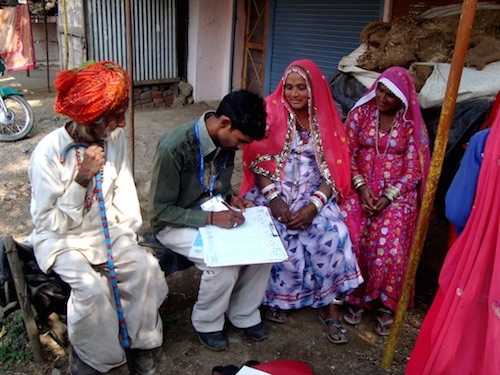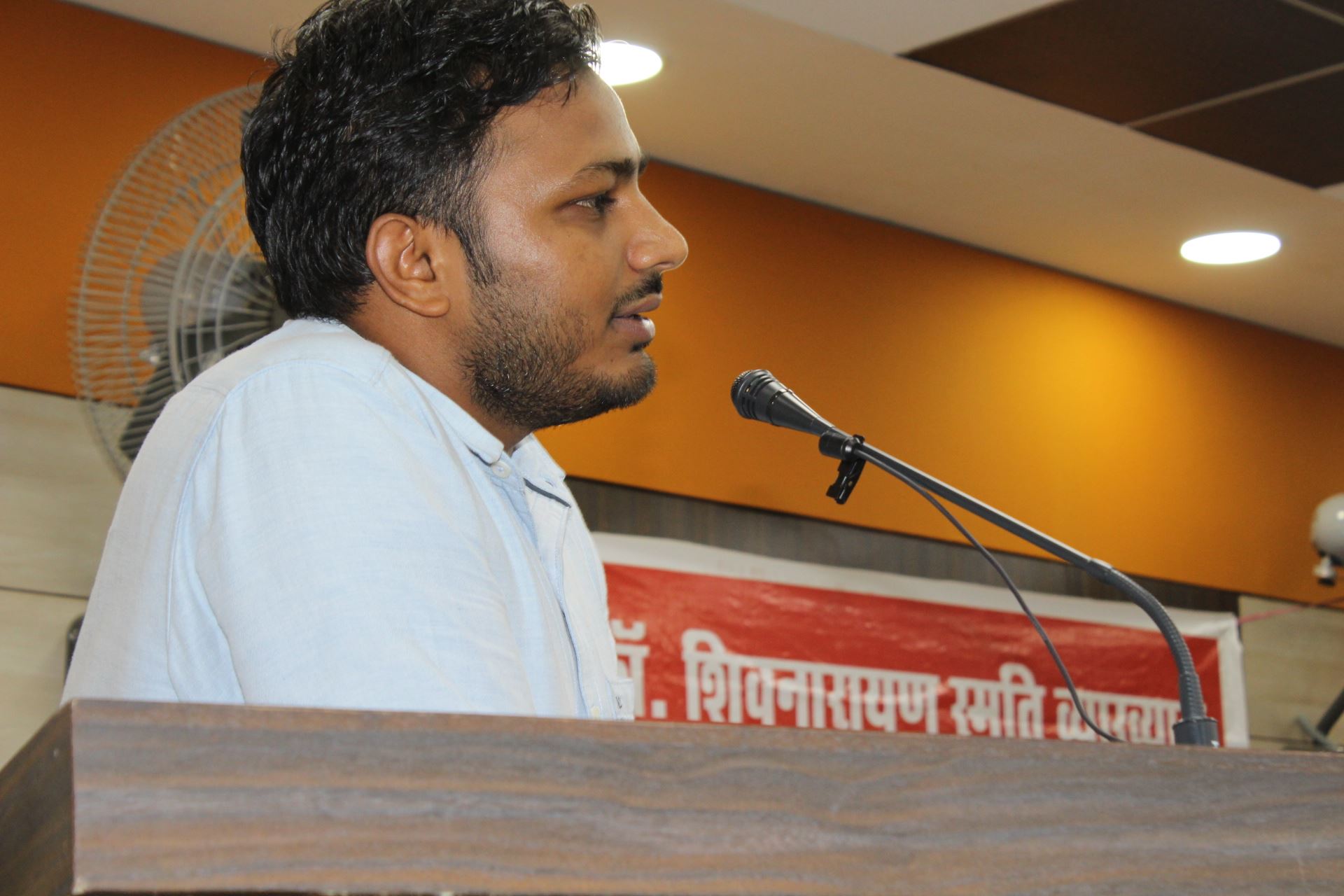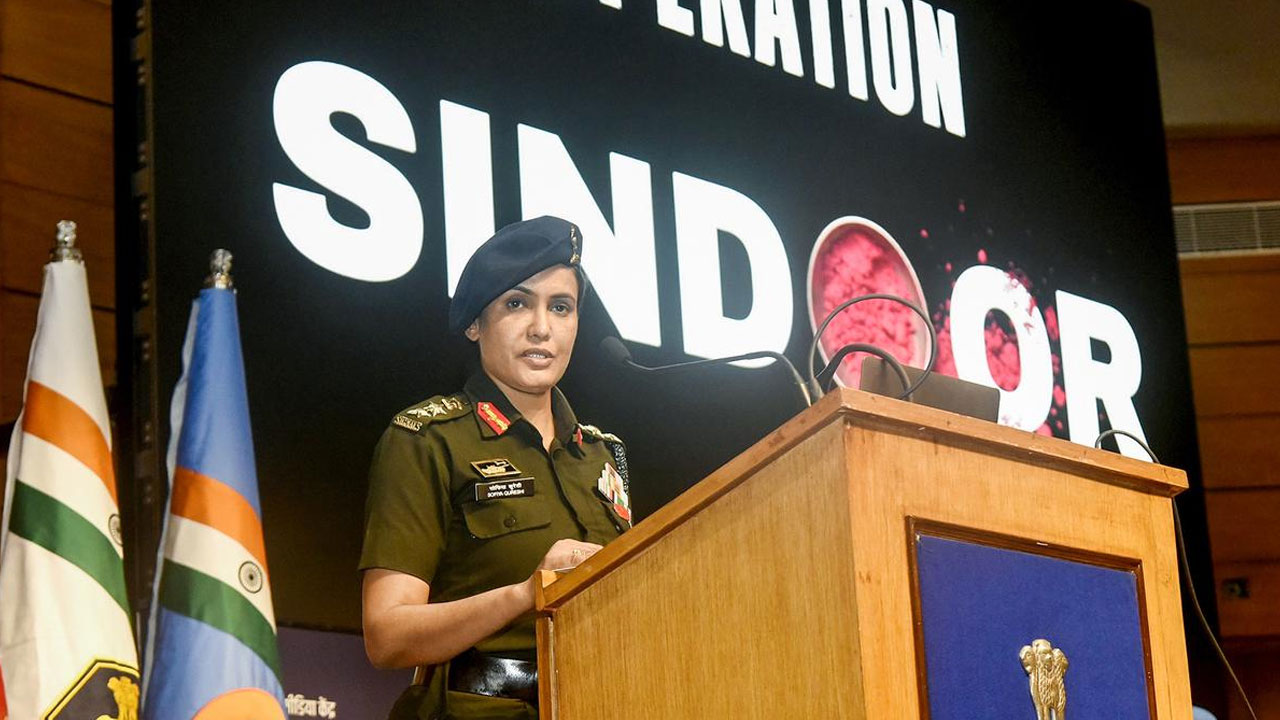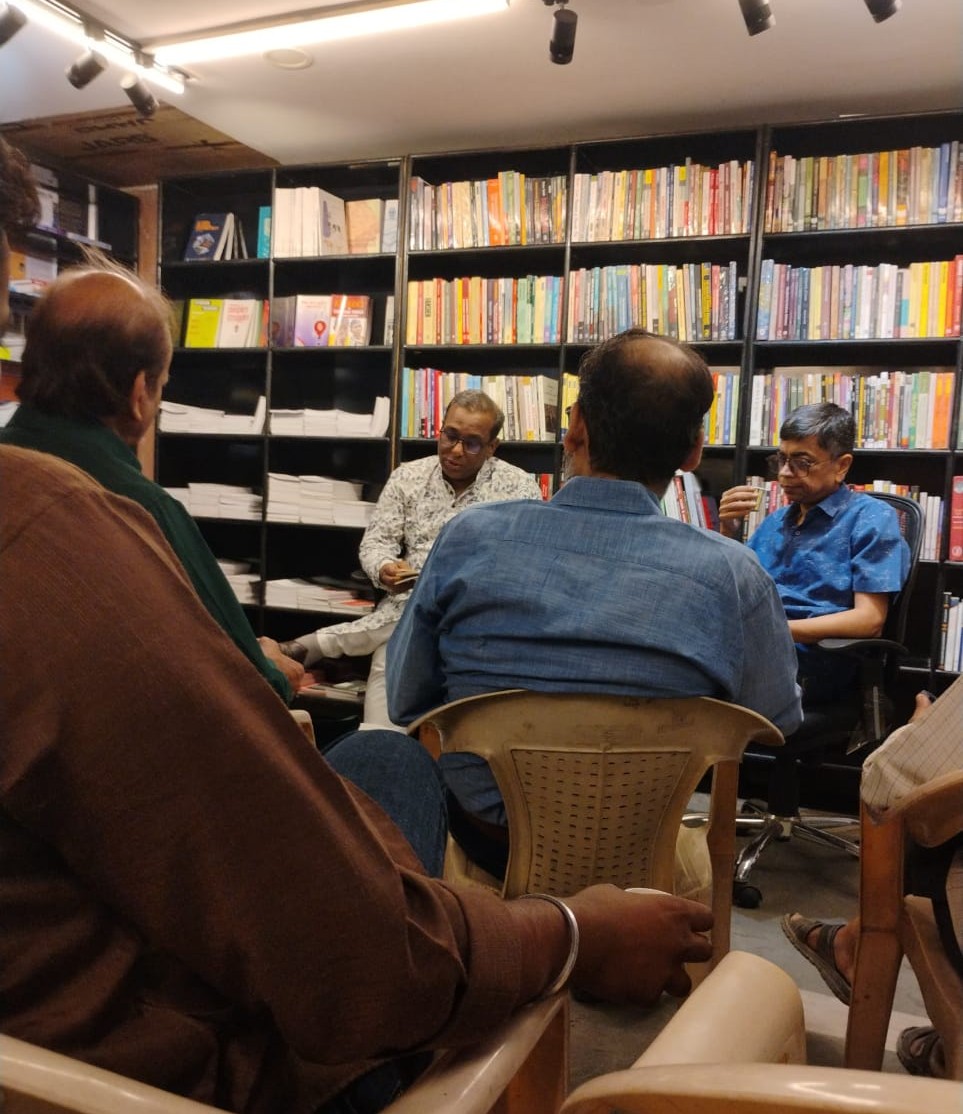Since the partial release of Socio-Economic and Caste Census 2011 (SECC) by Finance Minister Arun Jaitley on 3 July, an intensified campaign has been launched by those carrying the social-justice banner, both inside and outside Parliament, to pressurize the Modi Government for the release of the caste census. While MPs from the JD-U, the RJD and Samajwadi Party, under the leadership of Mulayam Singh Yadav, have recently raised their voices in Parliament, RJD President Lalu Prasad Yadav has taken the battle to the streets. Lalu held a protest march in Patna, sat on a daylong hunger strike, and called for a 27 July Bihar bandh, which turned out to be a success. One of the key leaders of Mandal politics, Lalu knows very well that the delay in the publication of the caste census has given him an issue to mobilize the masses on, particularly OBCs and Dalits, ahead of the upcoming Bihar Assembly election.
 Realizing the possible political loss due to the withholding of the caste census data, the BJP-led NDA government approved the setting up of an expert group headed by Niti Aayog Vice-Chairman Arvind Panagariya to classify and release the caste census. The BJP is aiming at killing two birds with one stone – while by setting up the expert group the party answers the critics who say it is reluctant to release caste data, not fixing the time frame puts the “controversial” issue on the back-burner for some more time.
Realizing the possible political loss due to the withholding of the caste census data, the BJP-led NDA government approved the setting up of an expert group headed by Niti Aayog Vice-Chairman Arvind Panagariya to classify and release the caste census. The BJP is aiming at killing two birds with one stone – while by setting up the expert group the party answers the critics who say it is reluctant to release caste data, not fixing the time frame puts the “controversial” issue on the back-burner for some more time.
It is to be kept in mind that the top leadership of the BJP, much like that of the Congress, remains divided over the caste census. In 2010, the top brass of the BJP, then in the opposition, appeared split over it, with the predominant upper-caste BJP leaders and the RSS opposing the proposal of a caste census and the OBC leaders of the party supporting it. Years later, such a sharp split continues to run through the saffron camp. The RSS, unlike the BJP, does not shy away from opposing the caste census. Take for an instance, a recent article by A. Jairam in Organiser (2 August 2015), the mouthpiece of the RSS, which calls the caste census “divisive”, adding that it would “accentuate” caste division among Hindus.
Another article in Organiser (13 August 2015) similarly sees the process of recording caste in census as being opposed to “secular” and “democratic” values: “India has been declared a secular and democratic country without distinction between caste and creed. Why has the bogey of caste been raised?”
It has often been seen that whenever the Backwards and Dalits wage a political battle for distributive justice citing social and educational backwardness, the opponents of reservation and social justice invoke secularism and merit.
It is nothing new that the so-called protectors of the Hindu community remain callous and indifferent towards the plight of the Backwards and Dalits. But when the Backwards and the Dalits assert themselves and demand their legitimate share, suddenly a discourse of division among Hindus is constructed to silence any claim from below. For example, when Dr B.R. Ambedkar was fighting a separate electorate in the 1930s, the Congress tried to blackmail him by saying that it would create a division among Hindus. No wonder the Hindu Mahasabha and the Muslim League opposed the caste census of Hindus and Muslims respectively during the colonial period.
Historical interpretations
Apart from the propaganda of the RSS, a large number of historical works, which are otherwise much more sophisticated, have been produced to oppose or render problematical the very concept of a caste census. Influenced by French philosopher Michel Foucault, historians such as Bernard S. Cohn, Nicholas Dirks and Padmanabh Samarendra have challenged the process of data collection in the caste censuses during the colonial period.
According to Cohn, the history of caste census could be traced to the late 18th century, when the British, after having reserved the right to collect revenues in Bengal, undertook a process to collect, among other things, information about the history of districts, leading families and their customs, agricultural and craft production, etc. It was the same process of collecting information that culminated in the full census of 1871-1872, marking the beginning of pan-India decennial census. The noting of caste, which began with the first census, was dropped after the 1931 census. (Actually, the 1941 census was interrupted and thus rendered incomplete and invalid by the outbreak of the Second World War.) After decades of struggles by the Backwards, the UPA government eventually agreed to resume the process through the 2011SECC.
In his widely cited article “Census, Social Structure and Objectification in South Asia” (c 1987), Cohn made a broad argument that noting caste in a census was part of the colonial hegemony and the logic of administrative necessity for the British. For Cohn, the gathering of information on caste and religion had to do with the colonial mentality. As he put it, “It was felt by many British officials in the middle of the nineteenth century that caste and religion were the sociological keys to understanding the Indian people. If they were to be governed well, then it was natural that information should be systematically collected about caste and religion.”
Furthermore, Cohn argued that the process of caste enumeration, undertaken by the British government after 1857, made communities’ identities concrete. These were all part of the governing logic of the colonial state. “What was entailed in the construction of census operations was the creation of social categories by which India was ordered for administrative purposes,” added Cohn.
The resonance of Cohn is found in the contemporary debate as well. For example, Ambedkarite-Marxist scholar Anand Teltumbde (“Counting Caste”, Economic and Political Weekly, 10 July 2010) strongly opposed the demand for caste census, which, according to him, would lead to “advancing” the cause of the “ruling classes”. Thus, he said, the inclusion of information on caste in the census would be “the second biggest blow to the emancipation project of the oppressed people, the first being the Mandal reservations”.
It is paradoxical that Teltumbde, who claims to represent the voices of “the margins”, does not fully appreciate the Mandal movement, which changed the idiom of Indian politics and paved the way for further mobilization of the Bahujans. His tirade against the caste census is a manifestation of deep-seated fear among communists that any talk of caste would break up the solidarity of the working class.
A similar attempt to completely reject the process of caste census has been made by Padmanabh Samarendra (“Census in Colonial India and the Birth of Caste”, EPW, 13 Aug 2011). He went to the extent of saying that censuses produced caste in the colonial period and that if it was resumed, it would further concretize caste identity. This seems to be a reiteration of what Nicolas Dirks had earlier argued – that colonialism created caste structure in India.
Cohn, Dirks and Samarendra’s arguments of blaming the colonial government only for the birth of caste are exaggerated. These erudite historians often forget that the census records, despite their limitations, cannot be done away with and that these records are useful for policy matters even today.
However, one of their major premises is that caste is an “invention” and “fabrication” of the colonial state. Such a premise again is not persuasive as there is historical evidence of instances of caste atrocities, violence and discriminations in the pre-colonial period.
Unlike Cohn, Dirks and others, noted historian Susan Bayly (Caste, Society and Politics in India from the Eighteenth Century to the Modern Age, 1999) takes a more nuanced and persuasive view of caste by arguing that while the institution of caste underwent a change during the colonial period, caste has been a “real” and “active part” of India for centuries. Thousands of years before the coming of the British, the caste ideals were inscribed on the pages of the Rig Veda. Similarly, the sanctity of caste has also been extolled in the Gita, which states that without caste there would be corruption. Another brahmanical text, Manusmriti, propagated the principles of caste as a universal law of life.
Despite caste being a reality in social life, a large number of scholars, policymakers and politicians are still reluctant to acknowledge caste. No wonder a large corpus of literature has recently been produced in opposition to the resumption of caste census. Meanwhile, noted sociologists Satish Deshpande and Mary E. John (“The Politics of Not Counting Caste”, EPW, 19 June 2010) have been at the forefront of showing the benefits of a caste census.
The recent debate
Those who oppose a caste census typically question its feasibility. They argue that a caste census simply cannot be done, as the process of enumeration is unlikely to capture the complexities of castes. In other words, they argue that the process of a caste census is not only complex but the authenticity of the data produced is also not beyond doubt. Further, they contend that as caste census is linked to the colonial policy of “divide and rule”, its resumption, in post-Independence India, would further “reify” or concretize caste identity, fuel the process of “political manoeuvring” and “reintroduce” caste conflicts and mobilization, thus violating the principles of the Constitution.
On the question of complexities involved in data collection, Deshpande and John have rightly pointed to the availability of superior technology today, adding, “It must not be forgotten that since 2001 the Census has had access to technology far superior to that of earlier editions.”
When the government has been so determined to gather personal information of millions of people within such a short span of time for the issuing of Aadhaar cards, even when such an act is being seen as a violation of privacy, is it not also capable of getting accurate caste details of its citizens?
Would a caste census promote “casteism”? Those who are raising these doubts to put a spoke in the caste-census enumerator’s wheel should be countered by reversing their own logic. Has caste disappeared in the last eight decades after 1931 when there has been no caste census?
Eminent economist Professor Amitabh Kundu, who chaired the Post-Sachar Committee, constituted by the Prime Minister’s Office, to evaluate the process of implementation of both the report of the Sachar Committee on the socio-economic and educational status of the Muslim community and the Prime Minister’s New 15-Point Programme, dismissed the view that a caste census would promote “casteism”. “It is better to have an informed debate than sweep the issues under the carpet,” he said. “A discussion and debate based on speculative figures would promote dangerous casteism.”
In contrast to the claims that a caste census hardens caste identity, triggers caste conflicts and leads to political manoeuvring is its primary aim: knowing the comparative social and economic status of various castes. Since the government has little data about the shares of different caste groups in jobs, collection and compilation of such data would enable the government to launch policies, targeting the deprived groups.
Prof Kundu underscored the urgent need to collect hard facts about the social and economic conditions of different castes: “The disaggregation of population by caste and religious group is extremely important for the successful implementation of many of the government programmes.”
A number of political economists have agreed that inequality has risen across the world, particularly on the heels of the market-led economic liberalization. The worst victims of this process in India are believed to be the Backwards and Dalits. For example, SECC 2011 data has pointed to the grim reality of rural India where the main earning members of 90 per cent of rural households make less than Rs 10,000 a month. Similarly, almost 36 per cent of urban households live below the poverty line (BPL), while around 56 per cent households are within the broader category of “urban poor”.
But while comparative data of SECC 2011, which could have made our understanding much more nuanced, has yet to be made public, some other empirical works have already hinted at the prevalence of abject poverty among the Backwards and Dalits. For example, Sonalde Desai (“Caste and Census”, EPW, 17 July 2010), drawing on the data from the India Human Development Survey (2004-2005), has shown wide social group differences across forward castes, OBCs, SCs, STs, Muslim and other religious groups. According to Desai, the average annual income of a household was Rs 72,717 for forward castes, Rs 42,331 for OBCs, Rs 34,128 for SCs, Rs 32,345 for STs and Rs 44,158 for Muslims.
Yet another typical argument against caste census as well as reservations is that such policies go against the “caste-blind” approach of secular state. As mentioned above, the advocacy for caste-blindness is made by those upper castes who have benefited most from the post-colonial state. Deshpande and John have rightly pointed to the real interests behind such a claim: “For the most privileged sections of the upper castes this was true in a certain sense because three generations of caste blindness had allowed them to fully encash their caste advantages. They were now in a situation where they no longer needed to invoke caste explicitly, having acquired all the other resources that guaranteed them the ‘legitimate’ advantages of inherited wealth, expensive education and abundant connections among their own kind. It is these groups of upper castes who are the most vociferous advocates of caste blindness today.”
It is ironical that while the upper castes are dead against considering caste as a variable in state’s policies, they do not mind using age-old caste-networks to block the entry of Bahujans at social, economic, cultural and political institutions. For example, the study of D. Ajit, Han Donker, and Ravi Saxena (“Corporate Boards in India: Blocked by Caste?”, EPW, 11 Aug 2012) has shown that industry and commerce continue to be dominated by the upper castes: 93 per cent of corporate board members are upper caste, particularly Brahmins and Banias.
As far as educational institutions are concerned, positive changes for the Backwards have begun, particularly after the implementation of the 27 per cent reservation but there is a lot still to be achieved. Let me cite an example of the Jawaharlal Nehru University, where the proportion of Dalitbahujans among the students has almost reached their proportion in the population but as far as faculty posts are concerned they are still marginalized. According to the 44th Annual Report of JNU, among the total 809 teachers, the number of SCs, STs and OBCs, as on 31 March 2014, was 40, 12 and 14 respectively.
Compared to their situation in economic and cultural spheres, the OBCs are faring better in the political domain. The rise of OBCs can be traced to the late 1960s when the Congress hegemony in the states began to be eroded and a number of regional parties, which were mostly headed by Dalitbahujans, emerged on the larger political scene. As noted political scientist Yogendra Yadav has documented, the political clout of OBC leaders increased after Mandal politics but the marginalization of OBC leaders continues. Despite a large section seeing the rise of Modi as the “ascendancy” of OBC politics, the reality is that the Modi Cabinet is dominated by upper-caste ministers (20 out of 27). The situation in the states is not very satisfactory either. In 29 states, there are hardly five or six OBC chief ministers and not a single Dalit CM.
These theoretical arguments and the empirical evidence don’t seem to be enough to convince some people of the need for a caste census. Their unwillingness to see any usefulness in a caste census is the result of their increasing fear that the release of the figures may officially give the seal of approval to the views that the upper castes, despite being in minority, continue to appropriate the overwhelming share of resources. The opponents are afraid that if the curtain is raised over the hidden reality, a new movement is likely to be born with the demand for removing the 50 per cent cap on reservation. Furthermore, the publication of caste data will also provide a much-needed momentum to those fighting for social justice, who have been going through a hard time. Hence, the leaders who stand for social justice must further intensify their struggles for the early release of caste census. The result of the upcoming Bihar Assembly Election is likely to have a bearing on the equation between the opponents and supporters of a caste census.
Socio Economic and Caste Census (SECC) 2011
- Congress-led UPA II approved SECC in 2011 after debate in Parliament.
- Both the Congress and the BJP were internally divided over the caste-based census.
- It was the first time after 1931 that caste census was undertaken.
- The counting was launched on 29 June 2011 from Sankhola, a village of Hazemara block, West Tripura district.
- This was the first paperless census in India in which hand-held electronic devices were used.
- The SECC 2011 was carried out in all states and union territories of India.
- The Ministry of Rural Development, Government of India, conducted and coordinated the census.
- The SECC is aimed at finding out the “multidimensional” aspects of poverty. It has also gathered information about rural households to enable the state to carry out a more effective targeting of government schemes.
- Finance Minister Arun Jaitley released some of findings in New Delhi on 3 July 2015.
- Under pressure from the opposition parties, the Cabinet approved setting up an expert group headed by Niti Aayog Vice-Chairman Arvind Panagariya. However, no time frame has been fixed for the publication of the caste census.
Published in the September 2015 issue of the FORWARD Press magazine






